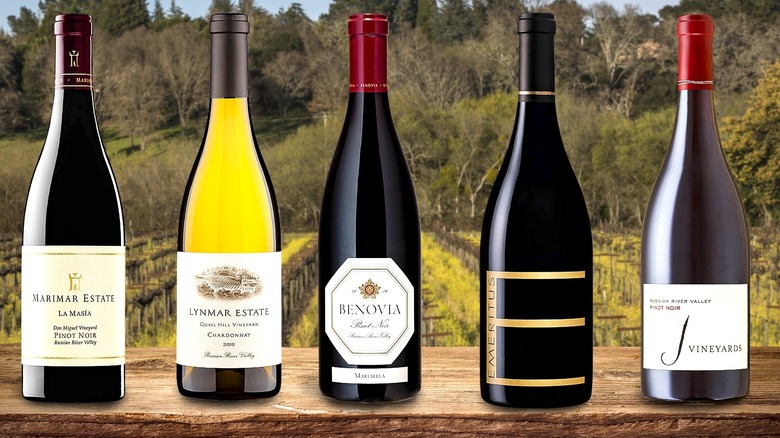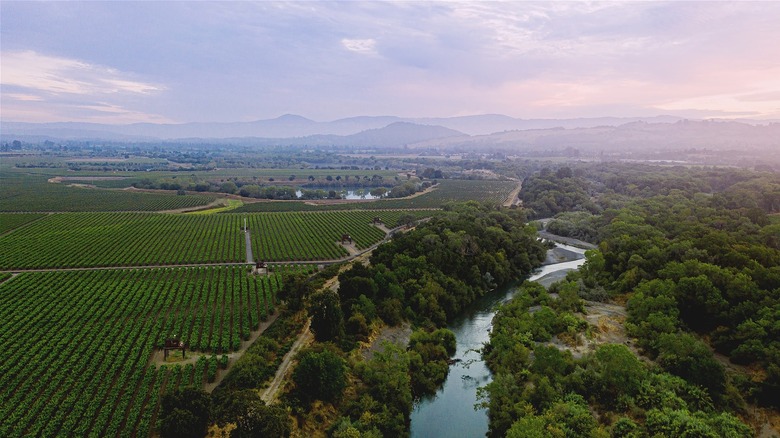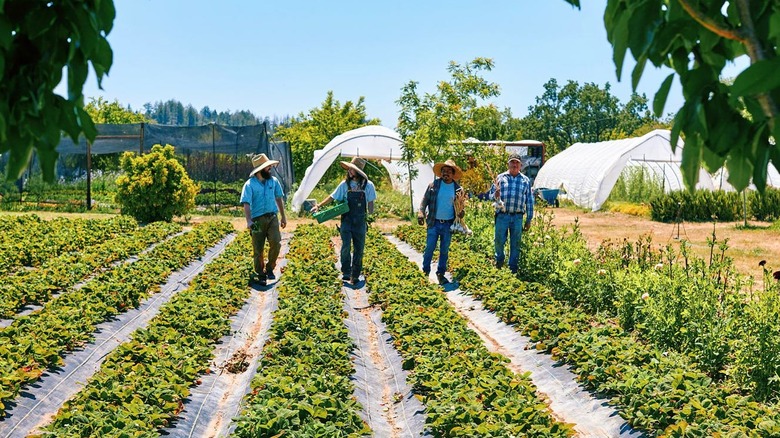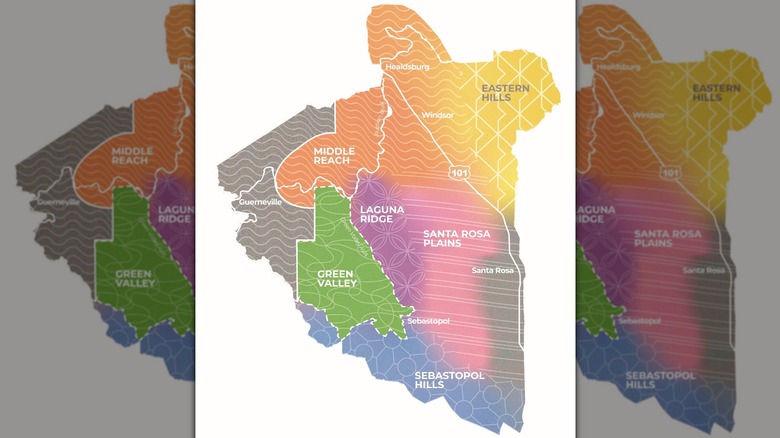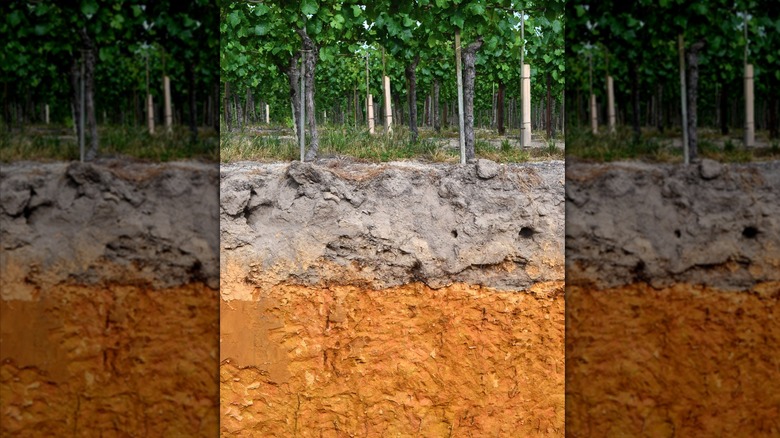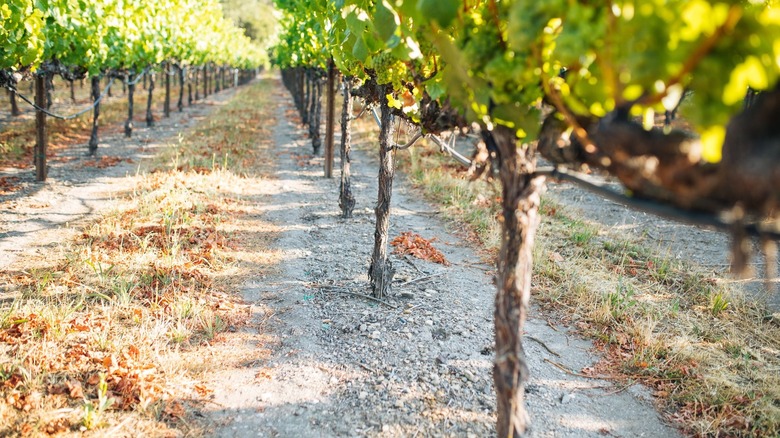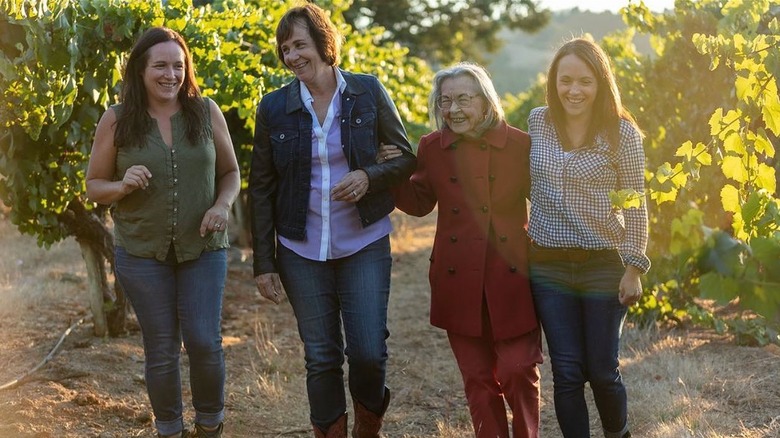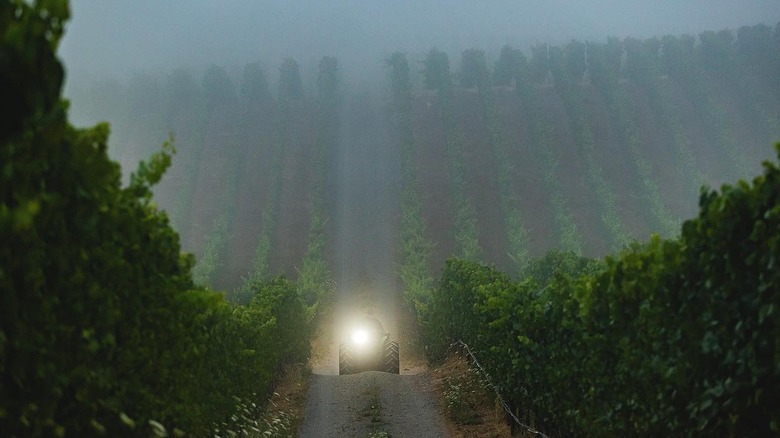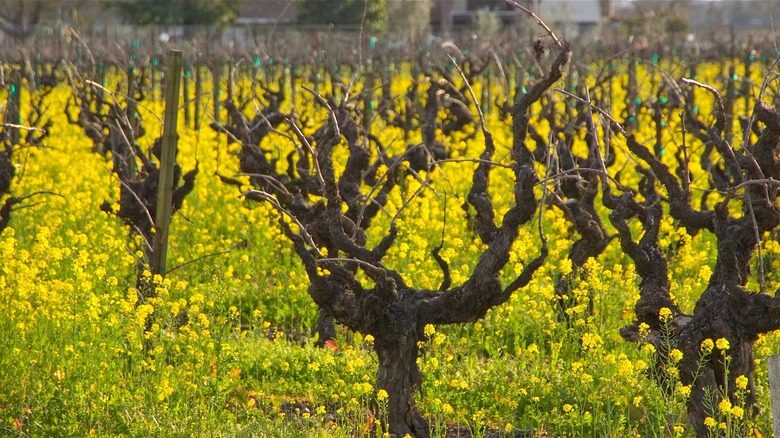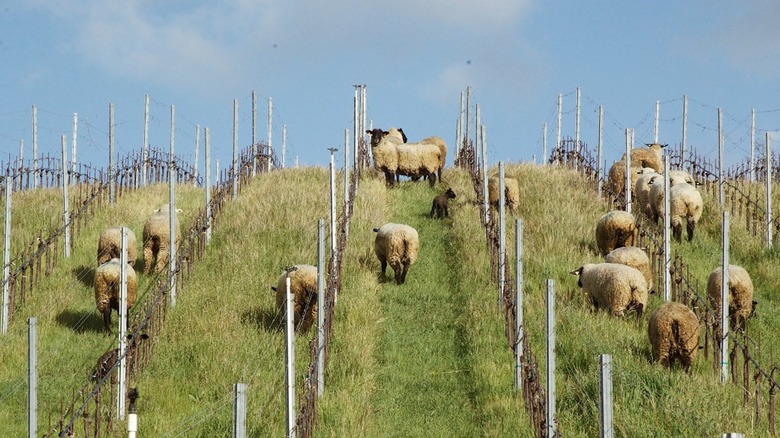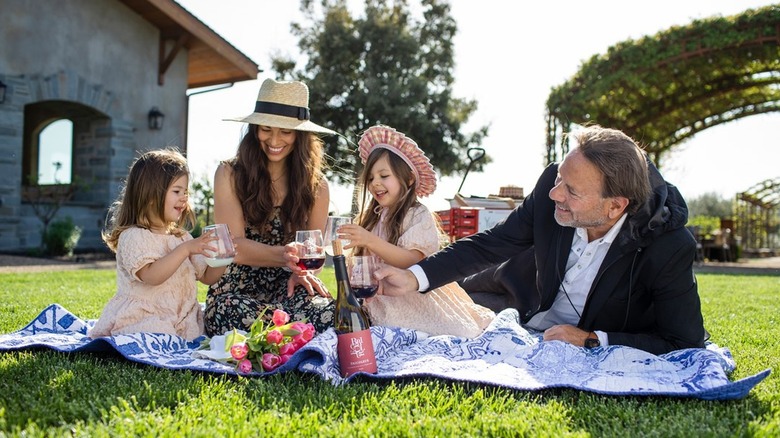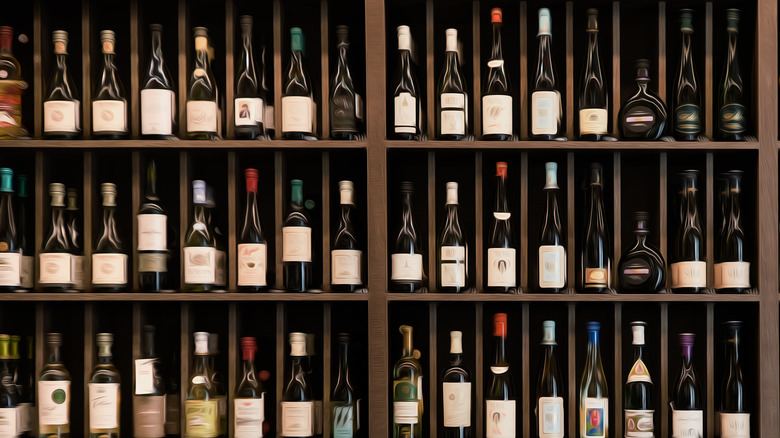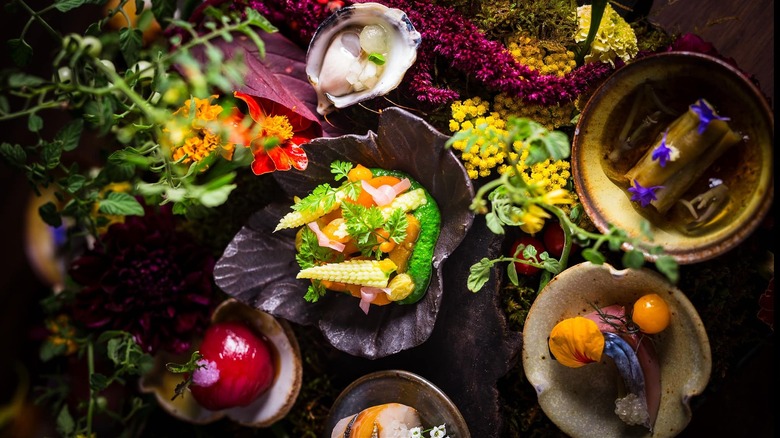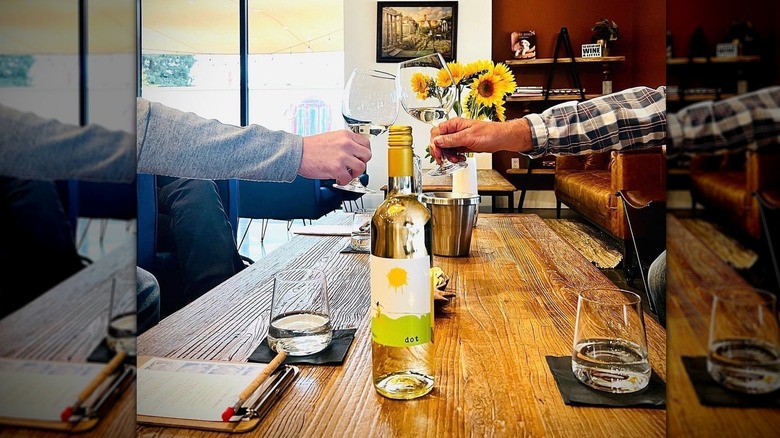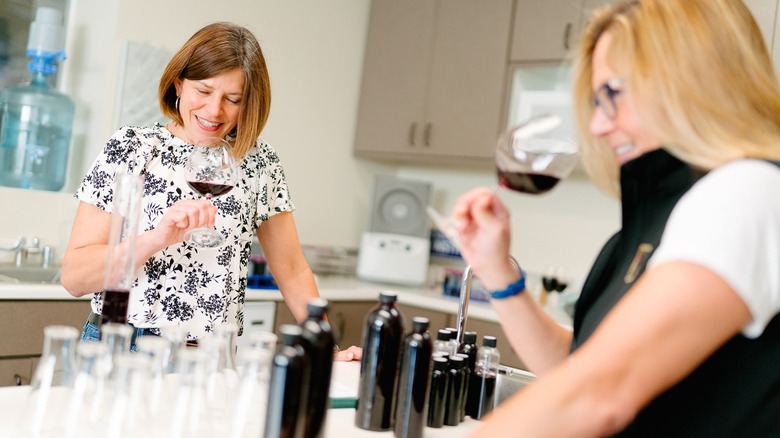A Beginners Guide To The Wines Of The Russian River Valley AVA
The heart-shaped region of the Russian River Valley is roughly an hour outside San Francisco in Northern California wine country. Located within Sonoma County, it is one of the largest wine regions in California, spanning 150 square miles, and is home to 15,000 acres of vineyards.
The area takes its name from the 110-mile-long Russian River that flows in the northern part of the region. The Mayacamas Mountain range is in the east, and the Pacific Ocean lies west with only eight miles separating the water and vineyards in parts of the appellation. The influence of the ocean and the river brings maritime characteristics to the vines.
Where other parts of Sonoma are hot and dry, like Alexander Valley, the Russian River Valley is cool and foggy, creating one of the longest growing seasons in California. It is ideal for crafting premium cool-climate wines like pinot noir and chardonnay. Though the two grapes have become synonymous with the region, they are amongst a diverse group of varietals that thrive there, highlighting the Russian River Valley's uniqueness in wine and people. This laid-back community was built by visionaries farming grapes as a hobby when taking time off from their full-time professions. And these family-run wineries produce some of the finest wines in the world.
The Russian River Valley AVA started in 1983
In 1836, the first grape vines were planted in the area known as the Russian River Valley American Viticulture Area. By 1876, there were over 7,000 acres of vineyards. Grape growing and winemaking became profitable until prohibition, and although the government repealed the law in 1933, the rebound from prohibition took decades. It took until the 1960s and '70s for the area once again to see significant viticulture growth of quality wine grapes.
By 1979, regional growers and producers, generally located in the plains south and west of Healdsburg, were looking to distinguish themselves from the rest of Sonoma County. Unlike other parts of Sonoma, the area's various soil types, diverse micro-climates, ever-present fog, and cooling afternoon ocean breezes create a cool coastal terroir.
In the early 1980s, they petitioned the Bureau of Alcohol, Tobacco, and Firearms for the area to become a stand-alone American Viticultural Area or AVA. An AVA has specific geographic or climactic growing conditions that set it apart from neighboring areas, and the label allows consumers to understand better where the product they buy is from. The petition was approved on October 21, 1983, establishing the Russian River Valley AVA.
Farming has been a way of life for generations
Agriculture has been crucial in the Russian River Valley since Russian fur traders colonized the area in the early 19th Century. It was a place where they could grow crops for another settlement in Alaska. It became a thriving area for the fur trade with the Russian-America Fur Company founding the colony of Fort Ross in 1812. Over the next 30 years, the fur trade dwindled, farming was ineffective, and the high costs of living outpaced revenues, forcing the Russian company to leave the area in 1841.
Early agriculturalists began planting crops that would become a part of the region's landscape, including hops, walnuts, cherries, berries, orchard fruit, and grapevines.
When prohibition halted the emerging wine industry, many vintners turned to these other crops to survive. Grapevines were relegated to the most nutrient-poor soils, as fruits and hops were the profitable produce. Sonoma Magazine reports that in 1953 around 15,000 acres of Gravestein apples were growing in Sebastopol with only 12,000 acres under vine. It would take until the 1970s for quality wine growing to reemerge in the region.
Russian River Valley is defined by six distinct neighborhoods
The terroir of the Russian River Valley is one of the most unique in California with a diverse range of temperature variations, topographical variances, and soil compositions, including more soil types than in France. Each variance influences the overall character of each wine. Though the entire appellation is the Russian River Valley, not all areas have the same composition.
Growers and winemakers refer to the areas as neighborhoods, including the Middle Reach, Santa Rosa Plains, Laguna Ridge, Green Valley, Sebastopol Hills, and Eastern Hills. No boundary lines exist between neighborhoods and commonalities like temperature and atmosphere exist across each; however, a wine from a particular area will represent unique characteristics. Regional producers could easily tell the difference between various neighborhood pinot noir in blind tastings by the taste and smell. Middle Reach will give you candied cherry and sweet spice. In contrast, Sebastopol Hills will have more dark fruits and savory characteristics.
But was there more to it than the subjective sensory experience? The University of California at Davis conducted a multi-year study that proved distinguishing neighborhood characteristics could be found in the wine, leaving a mark like a fingerprint, scientifically validating each as unique.
Green Valley of Russian River Valley is a neighborhood and an AVA
On the southern edge of the AVA, contained entirely within the region, is the Green Valley of Russian River Valley neighborhood and stand-alone appellation. The area is unique due to the presence of fog. With the Pacific Ocean just outside the region, the AVA is the first area consumed by afternoon fog rolling off the water daily and is the last place the fog will burn off. The fog's presence cools the vines, creating an extended growing season that allows the fruit to ripen slowly, maintaining acidity and freshness.
The neighborhood also has prized Goldridge soils covering 60% of the area. The brownish-yellow-hued sandy loam soil is found deep in the rolling uplands of the appellation. Mari Jones, president of Emeritus Vineyards, says: "Goldridge is highly sought after in our region because it is well-draining. The wine is more delicate with a more pronounced fruit profile in areas of the vineyard with a deeper layer of Goldridge."
She adds that farming without irrigation in the Goldridge soils creates healthier fruit with more concentration and lower alcohol. Her dry-farmed vines must dig deep into the earth to find nutrients. The resulting wine showcases Emeritus's signature style, which Jones tells us is "complex, intense, nuanced, and elegant."
Chalk Hill is a unique AVA within the Russian River Valley
In the northeast corner of Russian River Valley, there is an area of land unlike that surrounding it, Chalk Hill. The area became a stand-alone AVA in 1983 within the Russian River Valley. Though a sub-appellation of the region, Chalk Hill stands out due to its chalky white soils, ideal for chardonnay production. Due to its inland location, it has some of the warmest temperatures in the Russian River Valley.
The area's distinguishing attribute is the soil, a chalky white mix of quartzite-rich volcanic ash. The soil has little organic matter, making it less fertile than other soils within the appellation. However, this translates to an ideal growing environment for grapes as vines must dig deep into the earth to find nutrients. The overall grape yields from Chalk Hill are lower than in other parts of the AVA. Still, the quality is undeniable. Chardonnay dominates the grape plantings in Chalk Hill, creating well-rounded wines with ripe orchard fruits and a mineral-rich character.
The wine community is built on multi-generational families
Corporate and consolidated ownership is overtaking many California wine regions. However, in Sonoma County, 95% of the region's vineyards are family-owned and operated. Within Russian River Valley, multi-generational owners follow in the footsteps of those before them or expand on what their relatives began, like Pellegrini, J. Rochioli, Bacigalupi, Iron Horse, and Martinelli.
We asked Katey Bacigalupi Row, co-manager of Bacicalupi Vineyards, about the importance of family and the longevity of multi-generational wineries in the Russian River Valley. Row's grandparents, Charles and Helen Bacigalupi, started as vintners in 1956. "In recent years, we have seen a shift to conglomerate ownership in the industry," Row says. "Small family operations are selling out to larger investment firms. We are invested in not becoming one of those statistics. It's important that we work together as the next generation and continue to forge this path that the families before us have laid out. It's one of the reasons this area is so desirable, and we need to continue cultivating that character."
Cool climate wines are synonymous with Russian River Valley
In the 1960s and '70s winemakers like Joe Rochioli Jr., Davis Bynum, and Charles Bacigalupi, began to plant cool-climate pinot noir and chardonnay in vineyards where varieties like mission and zinfandel had grown. The new wines became relevant, quickly receiving national and international recognition. The maritime climate and influence of the fog produce grapes with lively acidity to compliment the ripe fruit flavor. Grapes are harvested at night when cold to ensure they hold delicate aromas, flavors, and freshness.
We spoke with Mike Sullivan, winemaker and co-owner of Benovia Winery, about growing and making pinot noir in the Russian River Valley. Sullivan believes pinot noir can only be grown in a handful of places worldwide, and Russian River Valley is one of those. "When I talk about a sense of place, I am talking about something intangible that exists in the right growing conditions, when the vines, the climate, and the soil produce wines with exceptional characteristics," Sullivan tells us. "Russian River Valley pinot noirs are distinctive with intense fruit, bright natural acidity, and silky texture."
Winemakers are experimenting with varietal diversity
Though pinot noir is the most widely planted red variety within the AVA, warmer-weather grapes do incredibly well in pockets of the region, particularly in the warmer northeastern part of the region. Italian, Spanish, and other French varieties like sangiovese, merlot, and grenache are becoming more prevalent as consumer demand for something out of the ordinary increases. Marimar Estates features a selection of Spanish varieties, including albariño and tempranillo.
Marimar Torres is the President and CEO of the winery, and her family's roots are in Spain, as owners of Familia Torres. Torres tells us that she wanted to see how the Spanish grapes would fare in the Russian River Valley: "It was an experiment, and I've been lucky that it's working quite well!"
The appellation is also home to a rare number of old vine zinfandel vineyards, some dating back over 100 years. These gnarly old vines produce grape bunches with small berries, creating highly concentrated wines with an earthy, spicy character. As the region's temperatures are cooler than some areas where zinfandel thrives, like Paso Robles or Lodi, Russian River Valley zinfandel has a balance of tannin and acidity, delivering bright freshness, a trademark of the appellation's wines.
Sustainability is a way of life
Climate change and the ongoing abnormal weather patterns are among the top concerns of winemakers today. Clean farming is not just a trend in the Russian River Valley, it is a way of life. It is indicative of the future of the region, along with all of Sonoma County, as 99% of county growers are certified sustainable. Sustainability can include everything from regenerative and carbon-neutral farming to water conservation, composting, or having sheep graze in vineyards instead of using tractors.
Mike Sullivan shared some ways that Benovia works sustainably, including "experimenting with other vineyard inputs, like trellising and cultivation to mitigate drought and heat spikes during the growing season." Benovia's estate vineyards are planted at twice the average density for California vineyards, helping conserve natural resources.
Sustainability goes beyond the vines at Emeritus Vineyards. "The best thing that we can do is operate sustainably in all aspects," Mari Jones of Emeritus tells us. "This requires a dynamic and all-encompassing approach to every aspect of Emeritus Vineyards." Here the winery, the vineyard, and the employees are each an integral part of the producer's success. Jones adds that, "I also have a mandate to create a safe workplace, provide fair compensation and benefits, and build a community within our workplace, there is no other way to ensure a successful business."
Russian River Valley offers a mix of experiences, from rustic to lavish
The Russian River Valley wineries will deliver any style experience you like, whether you enjoy a laid-back rustic environment or a grand, luxurious tasting. The experience can include a wine tasting while sitting on a wooden bench outside a warehouse winery, like at the well-regarded DuMol. Or, a highly curated lunch pairing in a manicured garden overlooking a blooming vineyard, like at Bricoleur or Lynmar Estate.
The universal focus throughout the appellation is the wine. Many wineries lack official tasting rooms. Instead, you may taste in the cave or barrel room, outside in the parking lot, or on a bench in the middle of a vineyard. No matter where you taste, passion is universal throughout the Russian River Valley. Winemakers, owners, and staff are appreciative that you are there. They greet you with a laid-back, friendly feeling that is immediately welcoming.
Regional wines prices range from affordable to highly expensive
Over the past 40 years, the Russian River Valley has built a reputation for excellence. When you see the appellation name on a bottle, you expect something of high quality with authenticity and varietal character. However, quality does not always have to come at a premium price. Russian River Valley wine prices range from under $20 to several hundred dollars per bottle.
The key is to find the wine with the characteristics you enjoy. Smaller production wines from family producers might cost more than mass-produced options; however, they may provide unique characteristics defining regional qualities. We suggest finding a neighborhood producing wines in the style of your taste and exploring their producers. If you like wines with sour cherry and floral notes, try the selections from the Laguna Ridge neighborhood, like Lynmar Estate. If you prefer wines with structure and concentration, bold fruit, and juicy freshness, try a pinot noir option from Green Valley, like Emeritus, or a peppery, textured old-vine zinfandel from the Eastern Hills neighborhood, like Limerick Lane.
Pair Russian River wines with local flavors
There is a saying in wine that if it grows together, it goes together, and few places experience this more than in the Russian River Valley. California is known for its farm-to-table cuisine. Dishes use local produce, proteins, and dairy, like abalone from Sea Ranch, cheese from Point Reyes, and apples from Sebastopol. Straightforward preparations reflect their provenance and authenticity. You will also find these characteristics in Russian River Valley's energetic, cool climate wines, with winemakers employing a hands-off, terroir-focused approach.
Preparations may be simple but do not lack sophistication, as is evidenced by the three Michelin-star restaurant SingleThread Farm Restaurant Inn in Healdsburg. Husband and wife duo Kyle and Katina Connaughton create Japanese-style California cuisine. Kyle Connaughton is the chef, and Katina Connaughton is the farmer. The menu rotates with the season using produce grown on their estate farm. Each dish is artfully constructed, with refinement and precision, showcasing Mother Nature's bounty. It is unquestionably one of the region's best places to eat and drink.
Tasting reservations are requested but not always required
The COVID-19 pandemic shut down the tasting rooms in California in 2020. When wineries reopened, many did so with a reservation-only policy throughout Northern California. Reservations help many wineries as they allow for the proper scheduling of employees. However, it takes the discovery out of the process, as every tasting is pre-planned.
However, various Russian River Valley tasting rooms are open without a prior appointment. Family wineries like Moshin Vineyards, Joseph Swan, Martinelli, and Emeritus ask guests to call ahead to check availability but will also welcome walk-ins. Healdsburg, Sebastopol, and Santa Rosa tasting rooms are open without prior appointment, including Longboard Vineyards, Taft Street, and the Bacchus Landing Cellars Winery Cooperative, featuring a select group of boutique producers, including Dot Winesand Montagne Russe. If you do want to visit a winery requiring a reservation, making a day-of phone call never hurts. They may have openings.
Woman are leading wineries in the region despite historic exclusion
Historically, the wine industry has been a male-dominated business. Yet, despite the industry's patriarchal culture, women are emerging as leaders. We see this in the Russian River Valley, where women hold leadership roles as owners and principal winemakers throughout the appellation. Winemakers like Merry Edwards, Helen Turley, Barbara R. Banke, and Carol Shelton laid the groundwork for a winemaking culture that is thriving today.
When speaking with Mari Jones of Emeritus Vineyards about this dynamic, she tells us: "Russian River Valley is full of amazing women and next-generation winemakers. We are building the future with the wisdom and foundation from previous generations while adding our own new innovative techniques. It is our time." Today, Gary Farrell, MacRostie Winery, Merry Edwards Winery, Flaunt, Baciagalupi, and J Vineyards & Wineryare just a few of the many wineries in the Russian River Valley where the head winemaker is a woman.
Area wineries give back to their community
A defining element within the wineries of Russian River Valley is the focus on helping others. A natural part of being a good neighbor and steward of the land is giving back to your community. Whether giving through county-wide events, like the annual Sonoma County Wine Auction, or individual charitable donations and contributions, a philanthropic purpose is present throughout the region.
In speaking with Joe Anderson, co-founder and chairman of Benovia Winery, he explained the philosophy behind their philanthropic work. "It is our responsibility to share what we have with others and also to fund important programs to support the communities where we live and work," Anderson shared. From donating to regional food banks, funding local arts and education programs, donating to cancer research, and supporting organizations like World Central Kitchen and Meals on Wheels, the Russian River Valley is filled with a giving spirit.
